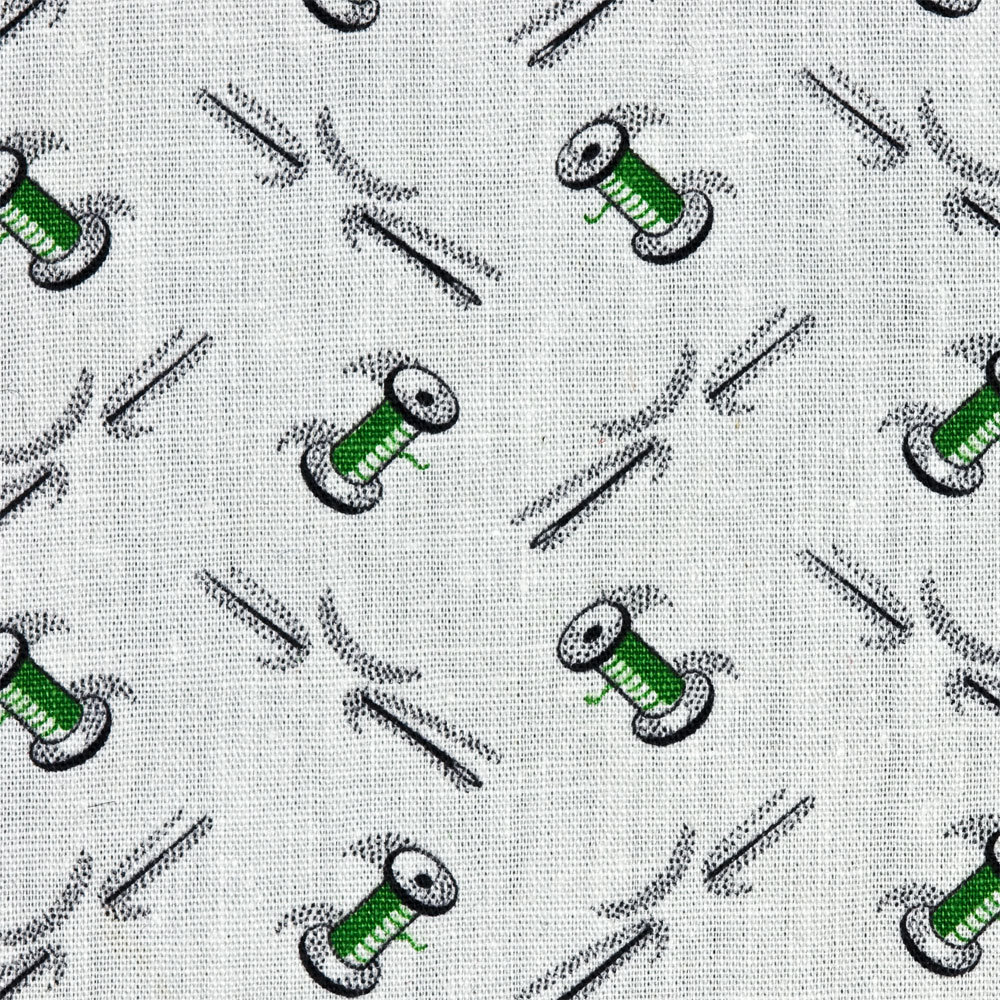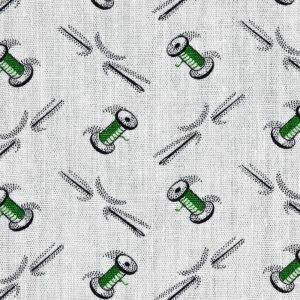Very popular in the last several decades of the 19th century, mill engravings were intricate prints made by hand engraving steel rollers, which would then be used to emboss larger copper rollers by repeating the pattern evenly over the entire roller. Copper was not as durable as steel, but steel was hard and difficult to engrave. When the copper roller became worn, the original steel pattern would be used again on the smoothed-off copper roller, or a new pattern would be used.
Intricate florals, and many whimsical patterns were made using this printing method. The number was staggering—as many as 300 prints might be produced by a single factory in one season.
The prints are small, detailed, and with obvious repetitions—most often in one or two colors. White cotton was printed, and the fabric was used for women’s and children’s clothing, and quilts.

